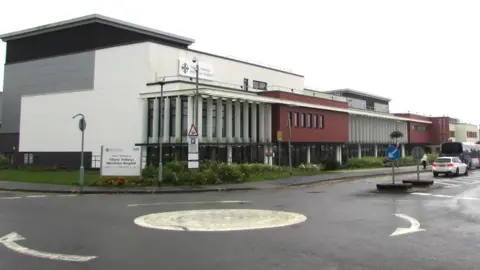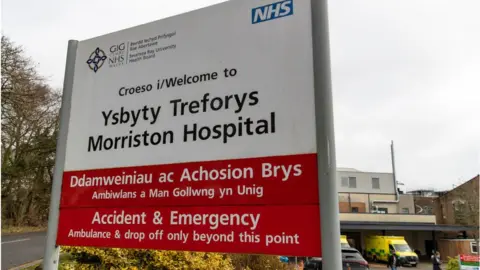Swansea: Morriston Hospital electricity sub-stations 'may fail'
 Jaggery / Geograph
Jaggery / GeographA hospital needs £16.5m for a new electrical sub-station because two existing ones are "at direct risk of failure", health chiefs have been told.
The sub-stations at Morriston Hospital, Swansea, are from the 1980s and are "no longer compliant" with standards.
"We need to keep the lights on and the machinery working," said Darren Griffiths, Swansea Bay Health Board's director of finance.
The board is to submit a bid for the money to the Welsh government.
Mr Griffiths said a new sub-station would also improve ventilation in the hospital's sterilisation and decontamination unit.
Currently ventilation in the unit is below 50% of the required level.
Mr Griffiths told colleagues at a meeting that the cost factored in inflation, but that getting work under way would be better sooner rather than later.
'At risk of overloading'
A report presented to the board said that if the two sub-stations were to fail it would disrupt the hospital's "theatres, theatre recovery areas and radiology services", according to the Local Democracy Reporting Service.
It added that the sub-stations were no longer compliant with current British standards, and were at risk of overloading their electrical supply.
If the project is approved by the Welsh government, the sterilisation and decontamination unit would operate from Singleton Hospital as an interim measure.
 Getty Images
Getty ImagesMr Griffiths added that he had been assured that installing a new substation would not disrupt services at the hospital.
If it is approved, work could start in October with the new sub-station up and running by December 2023.
Mr Griffiths reminded board members of the main rationale behind the new sub-station.
"A key driver is sub-stations three and four are out of compliance and at direct risk of failure," he said.
